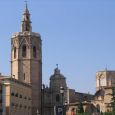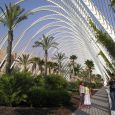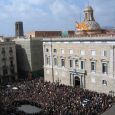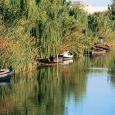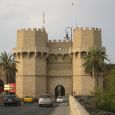Valencia
Advertisement
By Air
Valencia's Aeropuerto de Manises receives flights from major cities all over Europe as well as regular scheduled services from Spanish centres including Barcelona, Madrid and Malaga. The airport is located just six miles to the west of the city, with trains running to the city centre every 30 minutes, buses every 10 minutes and taxis and shuttles are also available.
By Rail
One of the best options for getting to Valencia from major urban centres in Spain is to take the train. The Spanish rail network offers a fast and efficient way to travel between major cities, with eight Talgo 200 high-speed trains per day from Barcelona, a four-hour trip; a dozen high-speed Alaris trains from Madrid, a three-hour, 30 minute journey; as well as services from Malaga on the Costa del Sol, which take nine hours. The main station at Valencia, Estación del Norte (North Station), is on Calle Játiva 2, near the city centre.
By Bus
Getting to Valencia by bus is a lot more arduous than any other transportation alternative in Spain if you are travelling long distance, although buses do present an affordable option for those who are on a budget. There are more than a dozen bus services each day that run to Valencia from Madrid, a four-hour trip; 10 daily buses from Barcelona, a five-hour journey; as well as five services from Malaga, which take eight hours. Valencia’s main bus station is the Estació Terminal d'Autobuses on Av. de Menéndez Pidal 13, which is located north of the city centre. Bus number 8 runs to the city.
By Car
Valencia is well fed by roads from all compass points. The main A7 motorway approaches Valencia from the north and the south, with direct access from Barcelona and Alicante respectively. The A7 reaches as far north as the French border and links up with the French A9. When approaching Valencia from the north, fork off from the A7 and join the N221 or the N34 for the city. The N340 also comes in from the south from the A7. If driving from Madrid, take the busy E901/N111 and the A3, a three to four hour journey.
Cathedral
Calle de San Vicente leads north into the Plaza de la Reina, the central square of the old town of Valencia. On the north side of the square stands the Cathedral (La Seo), built between 1252 and 1482 on the site of an earlier mosque. It is an imposing building with a predominantly Gothic exterior but a Baroque facade. In the south transept is the Romanesque Puerta del Palau, in the north transept the Gothic Puerta de los Apóstoles, richly decorated with sculpture and surmounted by a 14th century rose window. Every Thursday morning the ancient Water Court (Tribunal de las Aguas) meets in this doorway to deal with disputes over water
Botanical Gardens
Valencia’s Botanical Gardens have been in their current location at Huerto de Tramoyeres for over 200 years, although some of the greenery is much older than this. The gardens were relocated in 1802 and have achieved a relative amount of exposure owing to the efforts of the University of Valencia. The gardens have amassed thousands of species from climates the world over and many are housed in traditional 19th century-style greenhouses.
Palacio de la Generalidad
Northwest of the Cathedral, in Calle de Caballeros, stands the Palacio de la Generalidad (Audiencia), built between 1510 and 1579 to house the parliament of the kingdom of Valencia and now occupied by the Diputación Provincial. Particularly notable among the sumptuous rooms of the palace are, on the first floor, the Salón de Cortes, with a coffered ceiling and an azulejo frieze, and the Sala Dorada, with a superb artesonado ceiling.
La Albufera
Nature lovers should make the effort to visit Valencia’s biggest and most prominent natural habitat, La Albufera nature reserve. The reserve lies to the south of the city, behind Playa del Saler, Valencia’s best beach. A series of dunes and pine groves protect the park from the Mediterranean waters and in the centre of the reserve is a large freshwater lake. Hundreds of bird species nest and breed here including flamingos and herons, and visitors can take boat trips on the lake.
Torres de Serranos
On the north side of the old town are the Torres de Serranos, the old north gate of the town, built in 1398 on Roman foundations and restored in 1930. From the massive towers there are good views of the town. Temporarily housed in the towers is the Maritime Museum, which displays antiquities recovered from the sea.
Information not available


